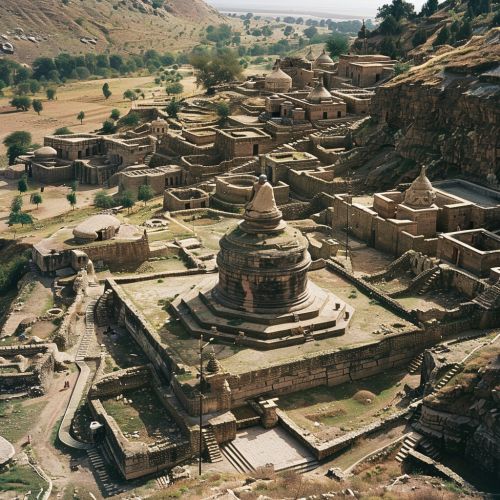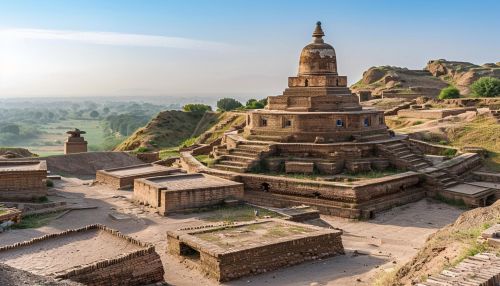Takshashila
History and Significance
Takshashila, also known as Taxila, was an ancient city and a renowned center of learning located in present-day Pakistan. It flourished as a significant cultural and educational hub from the 5th century BCE to the 5th century CE. The city is often considered one of the earliest universities in the world, attracting scholars from various regions, including Greece, Persia, and China.
The origins of Takshashila can be traced back to the Vedic period, and it gained prominence during the Maurya Empire under the rule of Chandragupta Maurya and his successor, Ashoka the Great. The city's strategic location on the trade routes connecting India, Central Asia, and the Middle East contributed to its prosperity and cultural exchange.
Educational Institutions
Takshashila was home to several renowned educational institutions, where subjects such as Vedic literature, astronomy, medicine, mathematics, philosophy, and political science were taught. The most famous of these institutions was the Takshashila University, which attracted students and scholars from far and wide.
The curriculum at Takshashila was comprehensive and rigorous, with a strong emphasis on critical thinking and practical knowledge. Students were required to master various disciplines and engage in debates and discussions with their peers and teachers. The university's faculty included some of the most eminent scholars of the time, such as Pāṇini, the grammarian who authored the Ashtadhyayi, and Charaka, the physician who contributed to the Charaka Samhita.
Archaeological Discoveries
The archaeological remains of Takshashila provide valuable insights into the city's historical and cultural significance. Excavations have revealed a wealth of artifacts, including pottery, coins, inscriptions, and architectural structures. The city's layout and infrastructure, with well-planned streets, residential areas, and public buildings, reflect its advanced urban planning and engineering skills.
One of the most notable discoveries at Takshashila is the Dharmarajika Stupa, a large Buddhist monument built by Ashoka to enshrine relics of the Buddha. The stupa is surrounded by smaller stupas and monasteries, indicating the city's importance as a center of Buddhist learning and pilgrimage.


Cultural and Religious Influence
Takshashila played a crucial role in the dissemination of cultural and religious ideas across Asia. The city was a melting pot of various cultures and traditions, with influences from Hinduism, Buddhism, Jainism, and other belief systems. The interaction between scholars and traders from different regions facilitated the exchange of knowledge and the spread of religious doctrines.
Buddhism, in particular, found a strong foothold in Takshashila, and the city became a major center for the study and propagation of Buddhist teachings. The presence of numerous monasteries and stupas, along with the patronage of rulers like Ashoka, contributed to the flourishing of Buddhist art, literature, and philosophy.
Decline and Legacy
The decline of Takshashila began in the 5th century CE, following invasions by the Huns and other nomadic tribes. The city's educational institutions and cultural centers gradually fell into disrepair, and its significance as a center of learning diminished. By the 7th century CE, Takshashila had largely been abandoned.
Despite its decline, the legacy of Takshashila endures in the annals of history. The city's contributions to education, culture, and religion have left an indelible mark on the Indian subcontinent and beyond. The achievements of scholars like Pāṇini and Charaka continue to be celebrated, and the archaeological remains of Takshashila serve as a testament to its historical importance.
